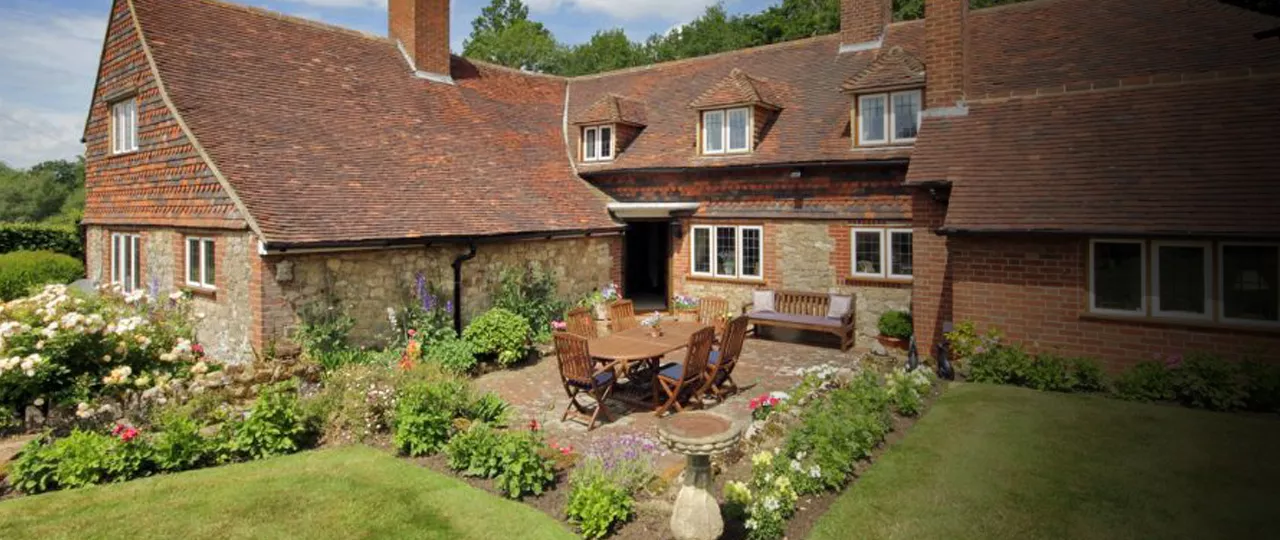
As summer approaches and you’re finally able to get outside once again, we take a look at how to make the most of your outside space – whether it’s a small city centre balcony or a 15-acre estate.
The country pile
Being lord (or lady) of the manor has many benefits – one of which is plenty of land. But owning a garden measured by the acre instead of square metres can come with its own challenges.
Moving into a new home, whether you’re buying or renting, with a huge garden can be daunting. Where do you start?
We suggest focussing on a few central features – whether it’s a pond, pergola, walled garden or vegetable patch. Get this in place and design outwards from it. If your garden is very large, you could incorporate two or three of these features.
Once you’ve got an idea of where to place them, you’ll then have an idea of where to put paths. This will give you a good skeleton framework into which you can add planting beds, areas of grass, patios and seating areas.
A good tip is to try and break up the land using large trees or different levels. A huge plain of grass can be dull to look at. Add in raised beds, rows of conifers or sunken seating areas, all connected by winding paths that draw the eye through the garden.
Suburban spaces
Whether you’re in a 4-bed semi or a suburban bungalow, your garden is important. Make the most of it, regardless of its size, with these easy tips.
When planning your suburban and city centre gardens, you’ve got to make sure that everything you put in your space has a reason for being there, whether it’s decorative or useful.
Charlotte Rowe, of Charlotte Rowe Designs, says: “Most city gardens are small and very visible so features such as benches, furniture, as well as plants, all need to work hard to earn their place and look good at all times. And the design has to be precise and the detailing well finished.
“People living in cities generally want to use their garden as an ‘outdoor room’– an extra space with areas for entertaining, dining or playing. A fireplace or fire pit makes a garden usable in autumn/winter and is a wonderful focal point.
“Garden lighting adds another dimension, creating a totally different view of the garden at night and making the space usable and visible throughout the year.
“Planting in urban gardens needs some structure. We like to combine shrubs with perennials and grasses for seasonal interest which, along with a good fence, wall or trellis, provide screening from neighbours and noise from the street.
“Breaking the space up in some way, for example using planting, can also help make the garden look larger.”
City centre flat
City living doesn’t mean you have to abandon nature. There are plenty of opportunities to get a little greenery into your life whether it’s through window boxes or a perfectly planned balcony.
City dwellers, especially Londoners, know how to make the most of their outside space, no matter how big it is. From creating stunning window displays using window boxes in rented flats to transforming disused rooftops into spectacular gardens, any outside space can become extra living room.
And it’s not just those in the property who benefit - it’s all of us.
Guy Barter, Chief Horticulturist of the Royal Horticultural Society, says: “The benefit of plants in even in the smallest spots is significant, not just in terms of satisfaction and enjoyment to the owner, but indeed to neighbours and the community.
“Some might think a single small tub does not amount to very much. But adding together everyone’s pots, containers, hanging baskets and postage stamp-type plots significantly improves the appearance of townscapes, benefits wildlife and helps absorb noise, pollutants and soaks up excessive rain.”
And for those who want green living but without the worry of having dead plants everywhere, Guy recommends peat-free growing as “an effective and affordable watering system that can help reduce maintenance and keep plants alive during holiday periods.”
These are ideal for people owning rental properties who might have periods of down time between lets or for those living abroad who use their city centre flat as a crash pad when visiting the UK.
